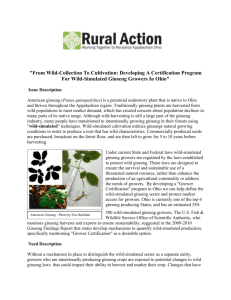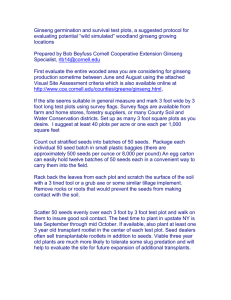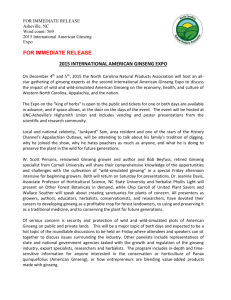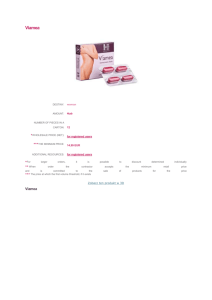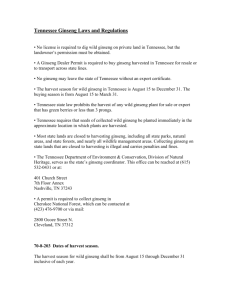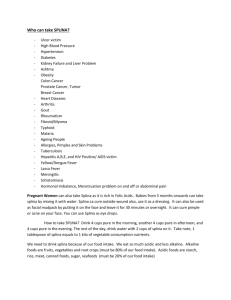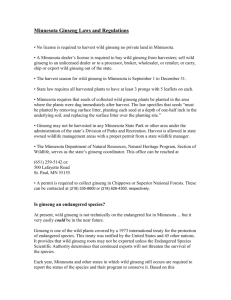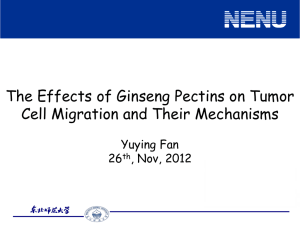About Ginseng - WildGrown.com
advertisement
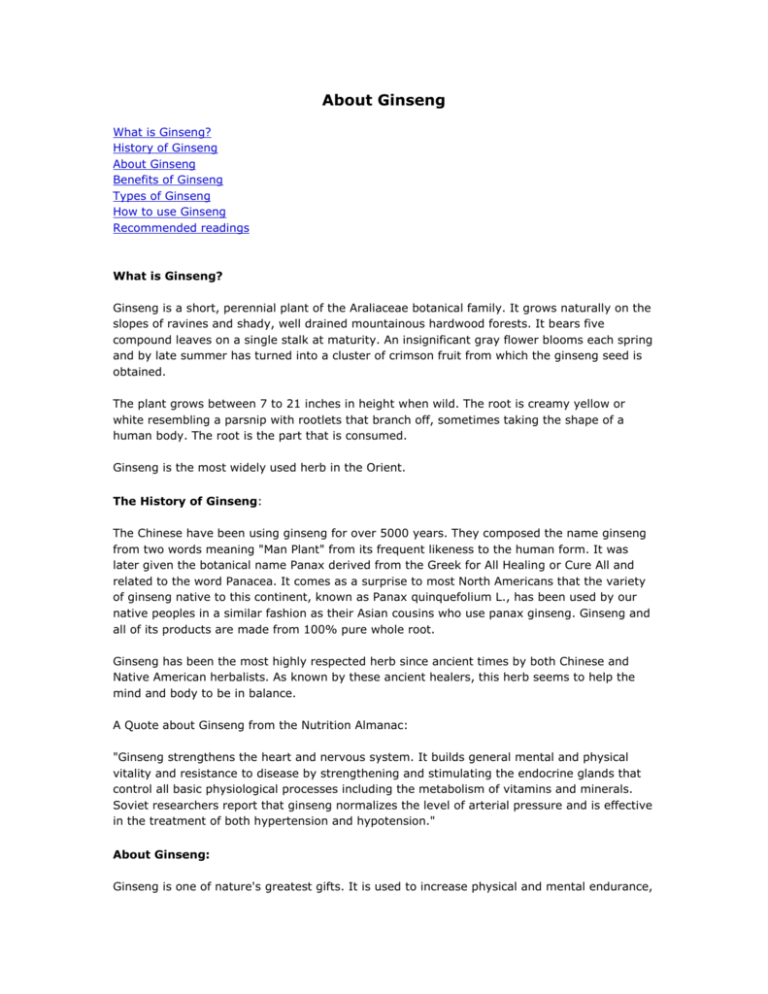
About Ginseng What is Ginseng? History of Ginseng About Ginseng Benefits of Ginseng Types of Ginseng How to use Ginseng Recommended readings What is Ginseng? Ginseng is a short, perennial plant of the Araliaceae botanical family. It grows naturally on the slopes of ravines and shady, well drained mountainous hardwood forests. It bears five compound leaves on a single stalk at maturity. An insignificant gray flower blooms each spring and by late summer has turned into a cluster of crimson fruit from which the ginseng seed is obtained. The plant grows between 7 to 21 inches in height when wild. The root is creamy yellow or white resembling a parsnip with rootlets that branch off, sometimes taking the shape of a human body. The root is the part that is consumed. Ginseng is the most widely used herb in the Orient. The History of Ginseng: The Chinese have been using ginseng for over 5000 years. They composed the name ginseng from two words meaning "Man Plant" from its frequent likeness to the human form. It was later given the botanical name Panax derived from the Greek for All Healing or Cure All and related to the word Panacea. It comes as a surprise to most North Americans that the variety of ginseng native to this continent, known as Panax quinquefolium L., has been used by our native peoples in a similar fashion as their Asian cousins who use panax ginseng. Ginseng and all of its products are made from 100% pure whole root. Ginseng has been the most highly respected herb since ancient times by both Chinese and Native American herbalists. As known by these ancient healers, this herb seems to help the mind and body to be in balance. A Quote about Ginseng from the Nutrition Almanac: "Ginseng strengthens the heart and nervous system. It builds general mental and physical vitality and resistance to disease by strengthening and stimulating the endocrine glands that control all basic physiological processes including the metabolism of vitamins and minerals. Soviet researchers report that ginseng normalizes the level of arterial pressure and is effective in the treatment of both hypertension and hypotension." About Ginseng: Ginseng is one of nature's greatest gifts. It is used to increase physical and mental endurance, boost energy, normalize body functions, reduce cholesterol, and prevent cancer. Traditionally, ginseng has been used to enhance sexual desire, by promoting sex hormone production. Ginseng supports the natural balance of your body to combat fatigue and strengthens and protects your nervous system. Now modern research has demonstrated that over 28 therapeutic elements (ginsenosides) are in this vitamin rich plant. Recent research shows that regular use of Ginseng is helpful in the treatment of memory loss (Alzheimer's), balance of blood sugar levels (Diabetes), slowing down the aging process, helping the immune system, etc. Benefits of Ginseng The benefits of long term usage of ginseng have been realized by the North American and European populations only since the late 1960s. As awareness of ginseng's properties steadily increase, so does its popularity. Ginseng's value is mainly as a preventative. It should be taken over a long period of time to stimulate rejuvenation and virility. Indications are the best long term benefits are achieved with a dosage of between 500 and 1500 mg (milligrams) per day. For therapeutic use, a dosage of 2000 mg per day is recommended. Ginseng may be effective for treating colds, coughs, rheumatism, neuralgia, gout, diabetes, anemia insomnia, stress, headache, backache and double vision. Women find it helpful in normalizing menstruation and easing childbirth. In an experiment study in Eastern Europe, ginseng was used effectively as a mouth was against Periodontal Disease which is a progressive destruction of the supporting structures of the teeth. Ginseng also counteracts the effects of physical and emotional stress, enhances memory, counteracts fatigue without caffeine, and improves stamina. Medically, ginseng stimulates the immune system, by spuring the production of the body's own virus fighting chemicals, helps reduce cholesterol levels in the blood, has anti-clotting effects, reducing risk of arterial blood clots, helps control diabetes by reducing blood sugar levels, is known as an antioxidant, preventing the cumulative cell damage researchers believe cumulates in cancer, protects the liver from the effects of drug, alcohol and toxins, minimizes cell damage from radiation, and increases intestinal absorption of nutrients. Types of Ginseng There are two distinct types of ginseng grown in the world, American ginseng (white or yellow in color) and Asiatic ginseng (red color). They claim that American ginseng has a cooling quality on the body versus a heating quality for Asiatic ginseng. The traditional Ying and Yang if you will. American Ginseng (Panax quinquefolium L.) American ginseng seems to be the most common name. Panax quinquefolium is native to Eastern North America from Southern Ontario to Georgia and as far west as Wisconsin. Panax quinquefolium is now also grown in China. Panax quinquefolium is believed to give a cooling effect to the body.This cooling, energy giving, endurance enhancing factor is believed to be the most beneficial for our fast paced, stressful world. Asiatic Ginseng (Panax Ginseng) Asian, Korean, or Chinese ginseng (all common names) refers to a plant native to North Korea and China but Red Ginseng is a processed product and is made from steaming Korean grown Panax white ginseng for 8 - 10 hours then drying; often it is processed further into tea, capsules or slices. Panax ginseng is used to warm the body. Siberian Ginseng (Eleutherococcus senticosis) Siberian ginseng, is a commonly found product given the common name of ginseng. It is not a true ginseng or it would have the genus Panax. It is though, related to the ginseng group as they both are in the Araliaceae family of plants, a very large grouping, including devil's club and sarsasparilla. Siberian ginseng does not have the chemicals called ginsenocides in its root but are said to have chemicals that do similar thing s. It is grown in Russia and China mainly and is native to East Russia and down to the Japanese Island of Hokkaido. The common name ginseng is so attached to this plant we will probably never get rid of it but customers should know it is not a true ginseng. How to Use Ginseng: Ginseng is available commercially in many different forms. The effectiveness of a ginseng product depends on the concentration and variety of ginsenocides it may contain. Benefits also vary greatly according to the processing and percentage of ginseng in the preparation. A recent study at the Philadelphia College of Pharmacy in the U.S. reported that 29% of randomly purchased products claiming to contain ginseng did not have any significant amount of the herb, another 27% contained ginsenocides in amounts so low that the preparation was considered unsuitable for therapeutic value. Thus consumers should be wary of what they are purchasing and be sure of the ginseng content in each item. Purchasing the actual dried root is the most economical and surest way to get the most value for your money. Mature roots can be consumed in a variety of ways. The optimal dosage of ginseng is two or three grams a day. Herbalists suggest ginseng be consumed daily or intermittently (three times a week). Ultimately each individual must depend upon personal experience with the herb. Root slices can be brewed slowly in a tea pot (silver or glass) for one hour. The resulting tea can be sweetened to taste, generally a bitter tasting root indicates higher potency. Root slivers can also be added to soups or liquors. In some preparations it is desirable to first grind your ginseng with a mortar and pestle. The resulting powder can be used in meals or can be placed under your tongue where the high concentrations of blood vessels allow the ginsenocides to be absorbed directly into the blood stream. Finally, the simplest way and method of choice for many ginseng devotees is to chew the dried root like a hard piece of hard candy. A quick five minute soak in boiling water will make the root more palatable. Chewing will introduce you to the true essence of ginseng, its flavor, texture, and its many benefits. Experimentation with these methods will allow you to decide what best suits your individual needs.

